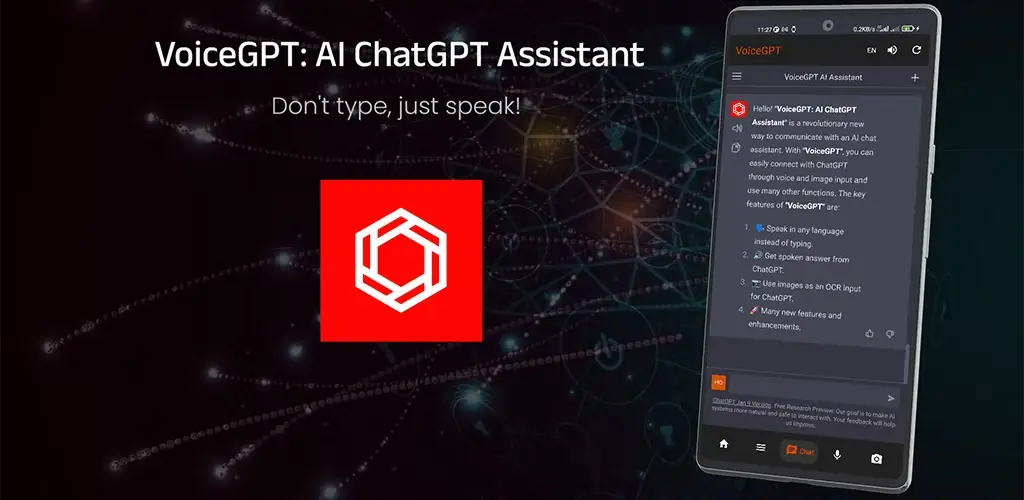In the ever-evolving landscape of artificial intelligence (AI), voice technology has emerged as a transformative force, reshaping the way we interact with devices and applications. VoiceGPT.us stands at the forefront of this revolution, offering a cutting-edge solution that harnesses the power of natural language processing (NLP) to enable more intuitive and seamless voice interactions. In this article, we will delve into the capabilities, applications, and impact of VoiceGPT.us, exploring how it is pushing the boundaries of what is possible in the realm of voice AI.
Understanding VoiceGPT.us
VoiceGPT.us is built upon the foundation of GPT-3.5, a state-of-the-art language model developed by OpenAI. Leveraging the advancements in deep learning and NLP, VoiceGPT.us focuses specifically on enhancing the capabilities of conversational AI through voice interactions. The underlying technology allows for the generation of human-like responses, making conversations with AI systems more natural and engaging.
Key Features and Capabilities
Natural Language Understanding (NLU): VoiceGPT.us excels in comprehending natural language input, making it adept at understanding user queries, commands, and prompts. The model has been fine-tuned to interpret spoken language nuances, enabling more context-aware and accurate responses.
Voice Synthesis: The hallmark of VoiceGPT.us lies in its ability to synthesize human-like voices. The model is capable of generating diverse and realistic vocal tones, adding a layer of authenticity to the user experience. This feature is crucial for applications such as virtual assistants, customer service bots, and interactive voice response systems.
Multi-Turn Conversations: Unlike traditional voice recognition systems that often struggle with multi-turn conversations, VoiceGPT.us excels in maintaining context across interactions. This enables more dynamic and fluid exchanges, resembling natural human conversations rather than disjointed and fragmented interactions.
Customization and Integration: VoiceGPT.us offers a high degree of customization, allowing developers to tailor the system to specific use cases. The model can be seamlessly integrated into various applications, from mobile devices to smart home systems, enriching the user experience across a wide range of platforms.
Applications of VoiceGPT.us
Virtual Assistants: The integration of VoiceGPT.us into virtual assistant applications opens up new possibilities for hands-free and conversational interactions. Users can engage in natural conversations with their virtual assistants, giving commands, asking questions, and receiving responses in a more human-like manner.
Customer Support: Businesses can leverage VoiceGPT.us to enhance their customer support services. The model can handle a variety of customer queries, providing accurate and helpful information while maintaining a friendly and approachable demeanor.
Interactive Learning: VoiceGPT.us can be employed in educational applications to create interactive and engaging learning experiences. Students can interact with AI tutors, practice language skills, and receive personalized feedback, fostering a more immersive and effective learning environment.
Entertainment and Gaming: The entertainment industry can benefit from the rich capabilities of VoiceGPT.us by integrating it into gaming experiences and interactive storytelling applications. The model can bring characters to life with authentic voice acting, creating a more immersive and captivating entertainment experience.
Impact on User Experience and Accessibility
The adoption of VoiceGPT.us has a profound impact on user experience and accessibility. By enabling more natural and intuitive voice interactions, the technology reduces the learning curve for users and enhances the accessibility of digital services for individuals with disabilities. VoiceGPT.us contributes to creating a more inclusive and user-friendly digital environment.
Challenges and Considerations
While VoiceGPT.us represents a significant leap forward in voice AI, it is essential to acknowledge and address certain challenges. Privacy concerns, potential biases in language generation, and the need for ongoing refinement are areas that demand attention. OpenAI is actively working to address these challenges, emphasizing transparency and responsible AI development.
Future Developments and Roadmap
The future holds immense potential for VoiceGPT.us as it continues to evolve and adapt to the ever-changing landscape of AI. OpenAI’s commitment to research and development ensures that the model will see improvements, addressing limitations and expanding its applications. The roadmap may include enhanced multilingual support, improved contextual understanding, and increased customization options.
Conclusion
VoiceGPT.us stands as a testament to the incredible strides made in the field of voice AI, pushing the boundaries of what is possible in natural language processing and synthesis. As businesses and developers embrace this technology, we can anticipate a future where voice interactions seamlessly integrate into our daily lives, providing a more intuitive, accessible, and engaging user experience across various applications. With ongoing research and development, VoiceGPT.us is poised to play a pivotal role in shaping the next generation of conversational AI, unlocking new possibilities and transforming the way we interact with the digital world.







